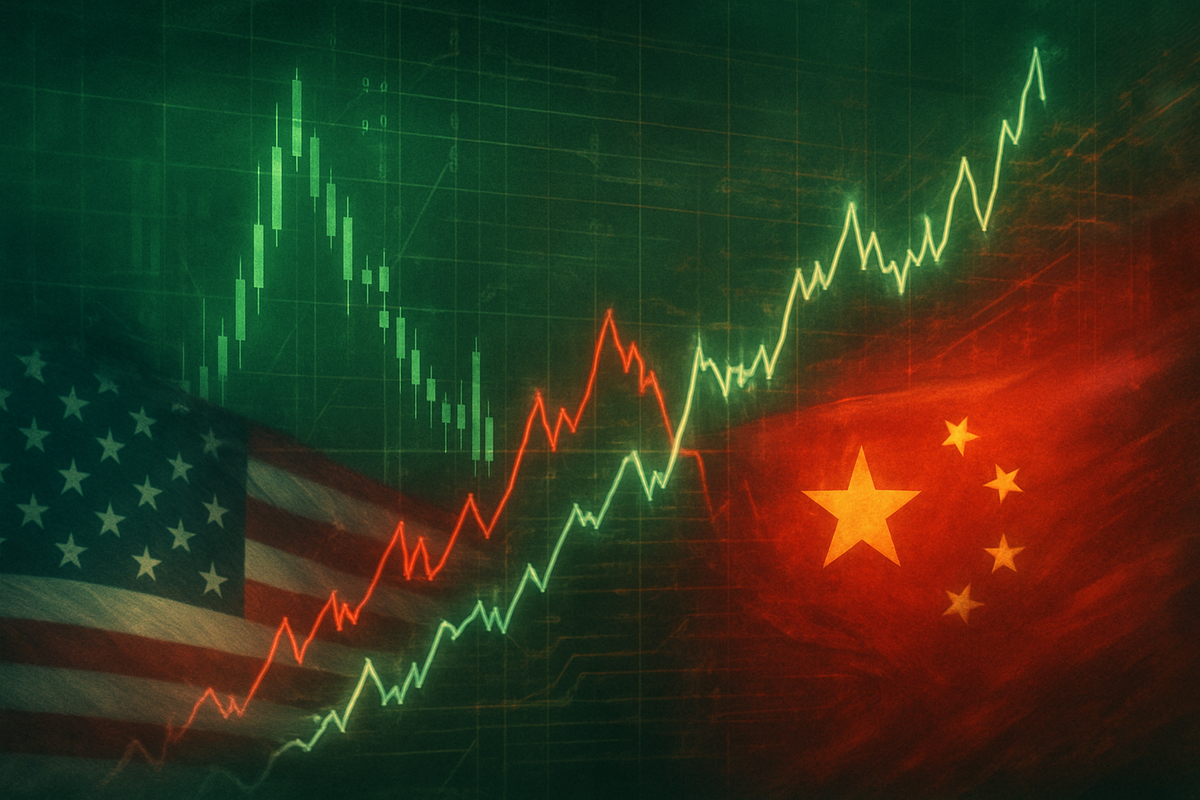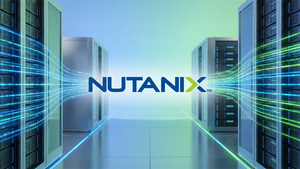
New York, NY – October 30, 2025 – The Dow Jones Industrial Average (DJIA) found itself in a tug-of-war today, as investors grappled with a barrage of mixed signals stemming from the latest round of big tech earnings reports and ongoing, nuanced developments in US-China trade relations. The blue-chip index experienced a session marked by volatility, reflecting a market attempting to price in both robust corporate performance from some tech giants and cautionary outlooks from others, all while weighing the unpredictable landscape of global trade.
Today's trading underscored a prevailing theme in late 2025: a market highly sensitive to individual company fundamentals within the influential technology sector and the geopolitical currents dictating international commerce. The confluence of these factors has created an environment where swift, decisive movements are often counteracted by opposing forces, leaving the Dow in a state of cautious anticipation.
Unpacking the Day's Influences: Earnings and Trade Dynamics
The day's narrative was heavily influenced by a series of earnings reports from major technology players, some of which are direct components of the Dow, and others that significantly impact broader market sentiment. For instance, Apple (NASDAQ: AAPL), a bellwether for consumer technology and a Dow component, reported stronger-than-expected services revenue growth, providing an initial uplift to the index. This positive news suggested resilience in consumer spending and a successful diversification beyond hardware sales. However, this optimism was partially offset by a more cautious outlook from Microsoft (NASDAQ: MSFT), another Dow heavyweight, which, despite solid cloud computing performance, signaled potential deceleration in enterprise software spending in certain international markets, citing global economic uncertainties. This mixed bag of results created divergence within investor sentiment, preventing a clear upward or downward trend for the broader index.
Simultaneously, the market closely watched developments concerning US-China trade relations. While no dramatic breakthroughs or escalations occurred today, reports emerged of stalled progress in certain sector-specific trade negotiations. Sources indicated that discussions around intellectual property protections and access to specific technology markets had reached an impasse, leading to concerns about the potential for renewed friction. This news tempered enthusiasm generated by positive earnings, particularly impacting industrial and semiconductor stocks with significant exposure to the Chinese market. The Boeing Company (NYSE: BA), a major exporter, saw some pressure, as did chipmakers like Intel Corporation (NASDAQ: INTC), both of which are highly sensitive to global trade stability and demand. The timeline of events leading up to this moment has been characterized by a series of on-again, off-again dialogues between Washington and Beijing, with each pronouncement or lack thereof sending ripples through the financial markets. Key stakeholders involved include multinational corporations navigating complex supply chains, consumers facing potential price adjustments, and governments striving to balance economic growth with national security interests.
Companies on the Front Lines: Winners and Losers
The mixed signals emanating from earnings and trade had a direct and varied impact on Dow components. Companies with strong domestic consumer bases and robust service-oriented businesses, such as Apple (NASDAQ: AAPL) and Visa Inc. (NYSE: V), appeared to be relatively insulated or even benefited from their strong earnings and less direct exposure to immediate trade disruptions. Apple's ability to pivot towards recurring revenue streams, for example, showcased a strategic resilience that resonated positively with investors today, despite broader market jitters.
Conversely, industrial giants and technology firms deeply embedded in global supply chains felt the brunt of trade uncertainties. Caterpillar Inc. (NYSE: CAT), a bellwether for global economic activity, experienced downward pressure as investors grew wary of potential slowdowns in construction and mining projects in key international markets, particularly Asia, if trade tensions persist. Similarly, semiconductor companies like Intel Corporation (NASDAQ: INTC) faced headwinds, as prolonged trade disputes threaten to disrupt their intricate global manufacturing networks and access to critical markets. Even Salesforce, Inc. (NYSE: CRM), while primarily software-driven, could face challenges if enterprise spending tightens globally due to macroeconomic uncertainty spurred by trade friction. The nuanced nature of today's market reaction highlighted a growing investor discernment, favoring companies with clear growth catalysts and diversified revenue streams over those heavily reliant on stable, predictable international trade flows.
Wider Significance and Broader Trends
Today's Dow performance is not an isolated incident but rather a microcosm of broader industry trends and geopolitical shifts. The increasing influence of technology earnings on overall market indices underscores the sector's outsized weight in the modern economy. As companies like Apple and Microsoft continue to innovate and expand, their financial health becomes a critical determinant of market direction. The mixed nature of these reports suggests a maturing tech landscape where hyper-growth may be giving way to more differentiated performance, demanding greater scrutiny from investors. This fits into a broader trend of market segmentation, where investors are increasingly distinguishing between truly innovative and resilient tech players versus those facing stiffer competition or saturation.
Moreover, the persistent shadow of US-China trade relations represents a significant structural challenge for global commerce. The inability to fully resolve long-standing disputes creates an inherent volatility that transcends specific earnings cycles. Potential ripple effects include increased supply chain diversification efforts by multinational corporations, leading to higher operational costs in the short term, but potentially greater resilience in the long run. Regulatory and policy implications could see governments worldwide re-evaluating their trade dependencies and potentially fostering more regionalized economic blocs. Historically, similar periods of trade friction, such as those seen in the late 2010s, demonstrated how quickly market sentiment can sour and how deeply corporate earnings can be affected, serving as a cautionary tale for the current environment.
What Comes Next: Navigating the Path Ahead
Looking ahead, the Dow Jones Industrial Average is likely to remain susceptible to these dual forces. In the short term, investors will keenly watch the next round of central bank meetings for any signals regarding interest rate policies, which could either exacerbate or alleviate the impact of earnings and trade news. Further, any concrete announcements – positive or negative – regarding US-China trade talks will undoubtedly trigger significant market reactions. Companies with robust balance sheets and diversified geographic revenue streams may be better positioned to weather potential storms, while those with concentrated exposure to volatile sectors or regions might face continued pressure.
Longer-term, the market may see strategic pivots from companies aiming to de-risk their supply chains and reduce reliance on single markets. This could lead to increased capital expenditure in new manufacturing hubs and a re-evaluation of international market strategies. For investors, this environment presents both challenges and opportunities. Identifying companies that are strategically adapting to the new global trade paradigm, or those whose technological innovations offer clear competitive advantages irrespective of trade headwinds, will be crucial. Potential scenarios range from a gradual easing of trade tensions leading to a sustained market rally, to a more fragmented global economy requiring a fundamentally different investment approach.
A Market in Transition: Final Thoughts
Today's trading session serves as a potent reminder of the complex interplay between corporate performance and geopolitical realities. The Dow Jones Industrial Average's mixed signals from big tech earnings and US-China trade developments highlight a market in transition, where traditional metrics are increasingly viewed through the lens of global interconnectedness and political will. Key takeaways include the growing importance of fundamental analysis over broad market trends, the critical role of diversified business models, and the enduring impact of international relations on corporate profitability.
Moving forward, investors should anticipate continued volatility and a heightened need for vigilance. Monitoring corporate guidance for signs of either resilience or vulnerability to trade disruptions, alongside official statements from trade negotiators, will be paramount. The coming months will likely test the adaptability of public companies and the resolve of policymakers, ultimately shaping the trajectory of the Dow and the broader financial markets. The landscape demands a nuanced understanding and a strategic approach, as the market continues to evolve in response to these powerful, often conflicting, forces.
This content is intended for informational purposes only and is not financial advice






